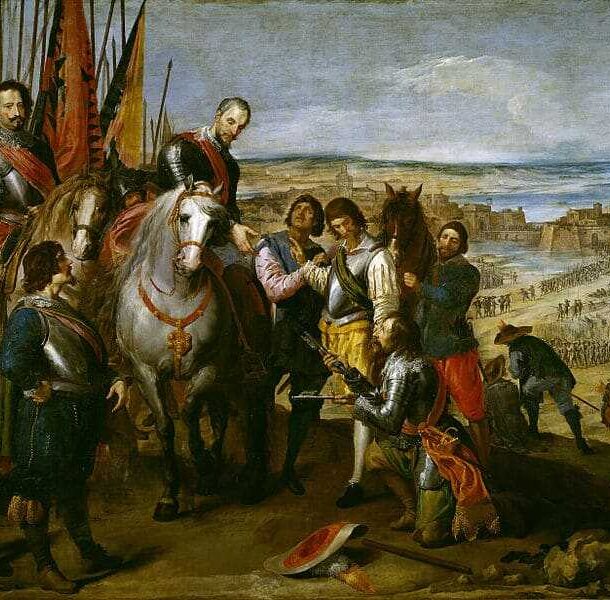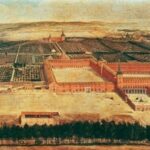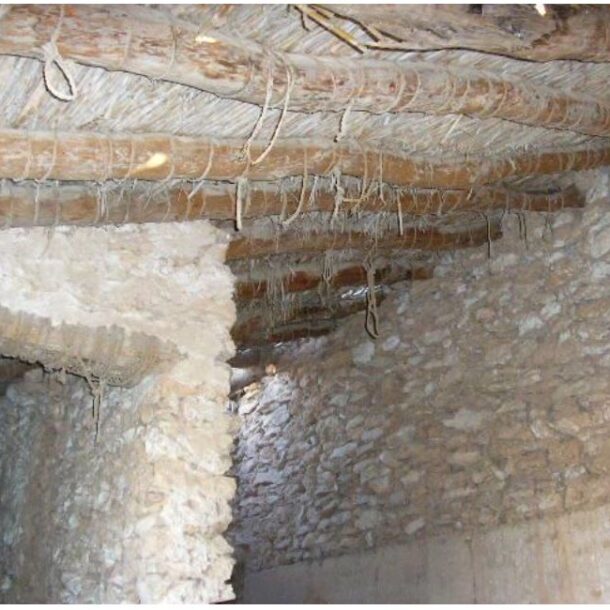
The Buen Retiro Palace was an architectural complex designed by Alonso Carbonel and built by order of Philip IV and the Count Duke of Olivares as a second residence and place of recreation on the outskirts of Madrid during the early 1630s. Its construction was conceived in such a way that a series of outbuildings were added to the monastery of Los Jerónimos located on the outskirts of the city, where the nobles had their palaces as a retreat from the hustle and bustle of the capital. Artists from various disciplines contributed to the construction and decoration of the new quarters, which were erected very quickly and with materials of dubious quality. They found a space there to exhibit their collections alongside the monarch’s collections, including those of Claudio de Lorena, Poussin and Ribera. Today, the Casón del Buen Retiro (the Prado Museum Library), the Salón de Reinos (the former Army Museum until 2005) and the rooms destined for the royal room (headquarters of the RAE) next to the monastery of Los Jerónimos are still preserved from that splendid space. Added to this is the Buen Retiro garden, which today, after the inclemencies of history, no longer conserves the extensive size it once enjoyed, nor the hermitages preserved inside it. See https://www.investigart.com/2015/01/22/el-palacio-del-buen-retiro-un-capricho-para-las-artes/
Collection: Images
Project: 11. Science and culture as representation in Europe.
Chronology: XVII
Scope: Secondary Education, Baccalaureate, University
Resource type: Image
Format: Oil on canvas
Source: Museo Municipal de Madrid (Madrid)
Language: Spanish
Date: 1636-37
Owner: Álvaro Romero González (Modernalia)
Copyright: Museo Municipal de Madrid (Madrid)
Abstract: View of the Buen Retiro Palace, which was ordered to be built around 1634, among other reasons, as a venue for the new courtly pomp and circumstance favoured by the Count-Duke of Olivares.
Image
Tags






